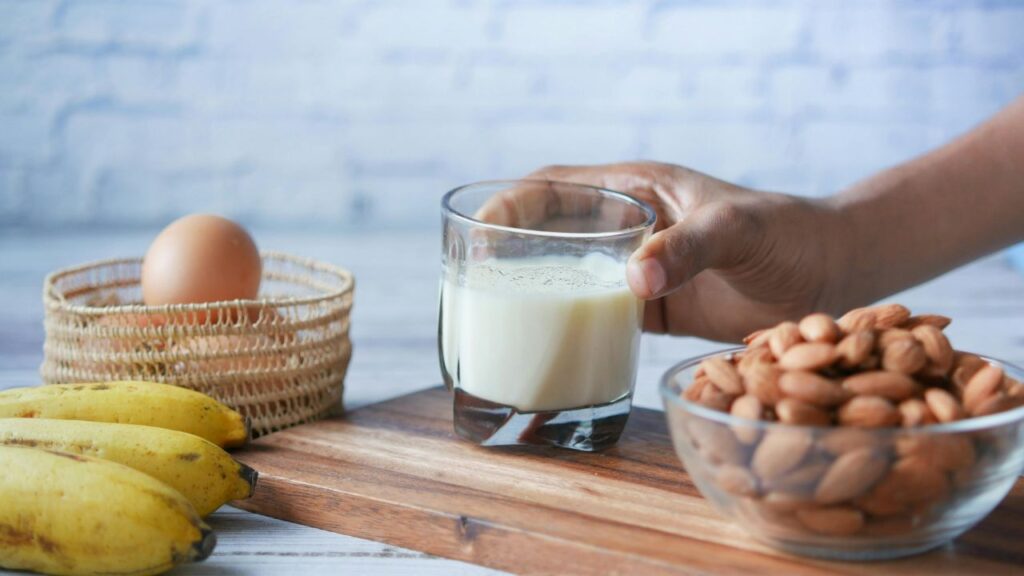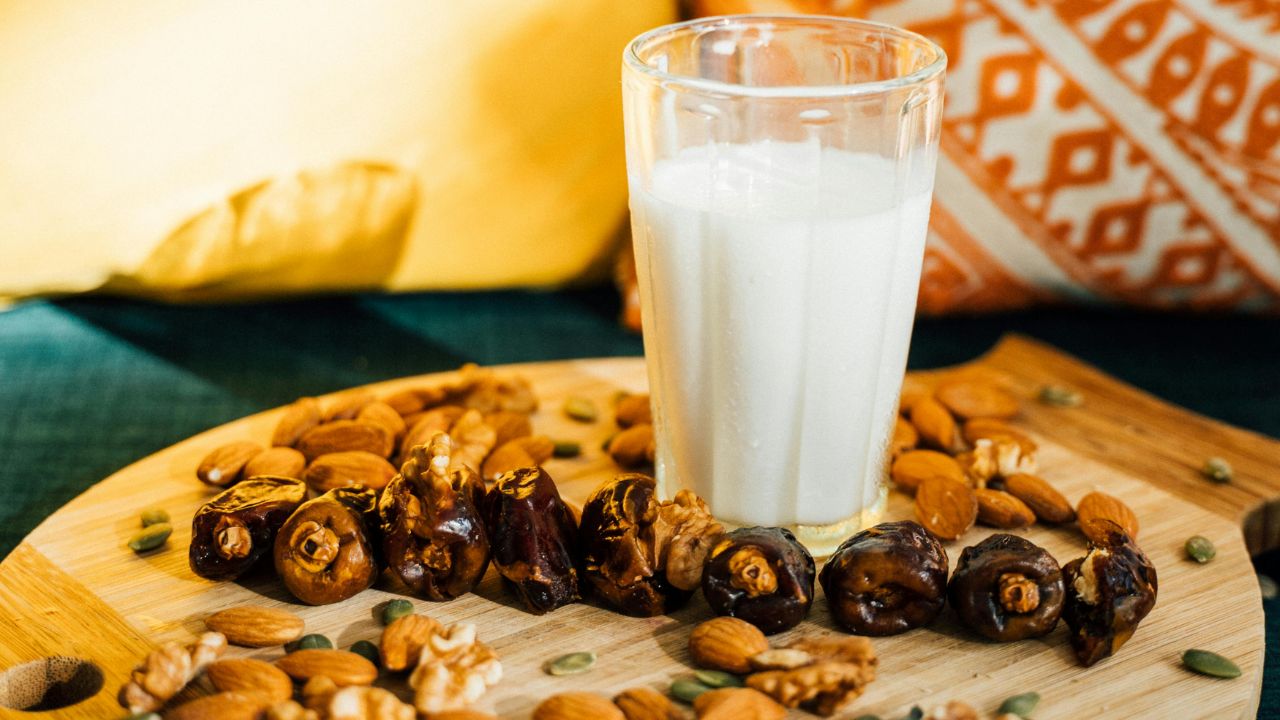Want milk that tastes like milk? Something new, excellent for you, and from actual farms? That’s where Milk Peru comes in. Forget about the boxes that don’t have names on them. This milk has a story behind it. It comes from Peru’s beautiful mountains and valleys and was manufactured by farmers who care. Let’s find out why is getting so much attention, what makes it so distinctive, and how you may enjoy this tasty bit of Peruvian culture.

What Exactly is Milk Peru? Let’s Break it Down
The name “Milk Peru” isn’t very fancy. It’s just from dairy farms in Peru. Imagine cows grazing on open meadows instead of being kept in barns. We’re talking about fields in the Andes at high altitudes or luscious coastal places where the air is clean and the grass is natural and varied. Milk Peru is distinctive because of its environment and the fact that farmers generally use traditional, small-scale methods. It isn’t as processed as the ultra-homogenized junk that fills grocery shelves in other places. Think fresher, with a fuller flavour, and made with real care for the animals and the earth. It’s milk how it used to be, coming right from the heart of Peru.
Why Milk Peru Packs Such a Nutritional Punch
So, what is it about this thing that makes it so good? Milk Peru has all the nutrients your body needs, plain and straightforward. It’s high in lots of great quality protein, which is great for building muscle and feeling full. Then there are minerals, such as calcium – which, to be healthy bones and teeth, is great and works with other minerals like phosphorus. If you don’t decide to take one of these alternatives, they also have Vitamin D added to them or it can be obtained through the sun which aids your body in utilizing the calcium. Don’t forget about the B vitamins that are in there and assist turn your meal into energy. And you also get iodine, which makes your thyroid happy and potassium for a healthy blood pressure. Choosing means choosing a whole food source of critical nutrients that is organically rich.
How Peruvian Farms Create Top-Tier Milk
Do you ever wonder how goes from the farm to your house? The farmers are where it all begins. Peruvian dairy farms are small and they’re family owned. They spend most of their time outside eating different varieties of grasses that are from that pasture. Each day is different! The taste and nutrients of the milk are directly affected by this diet. Animal welfare is usually a top consideration; cows who are healthier and happier make better milk. Milking usually combines modern hygiene with traditional care. The most important thing is that the milk is refrigerated very quickly once it is collected. This keeps the food fresh and flavourful before it goes to local markets or dairies, which can happen surprisingly quickly. The quality you taste in Milk Peru comes from their concentration on natural living, careful treatment, and quickness.

Milk Peru vs. Your Regular Pint
So, what does Milk Peru really taste like? A lot of people see it right away. It usually tastes cleaner and fresher than some milks that are made in large quantities. You could taste a trace of natural sweetness or feel a creamier, richer texture on your tongue at times. Why? It mostly has to do with the cows that graze on pasture and the specific breeds that are widespread in Peru. Big businesses want their products to taste the same all year, whole may taste different from season to season because of the shifting grasses. This is proof of its natural origins! Milk Peru has a full range of nutrients, including natural proteins, lipids, vitamins, and minerals. Plant-based milks, such almond or oat, generally need to be artificially increased to meet this. The real dairy taste makes it great for drinking directly or utilising in recipes.
Ways to Enjoy Milk Peru Daily
It’s easy to add Milk Peru to your day, and it helps everything taste better. It’s clear that a cold glass by itself is really refreshing. It really, really shines in your morning coffee or tea — and adds such a delicious richness which you will very much enjoy. What do you want for your breakfast? When made it tastes great in smoothies, swirled into muesli to make it even smoother, or just poured over cereal. You also gain a big upgrade in cooking and baking. Milk Peru, for your creamiest mashed potatoes, silky soups, silky sauces (such as béchamel) and nice custards or rice pudding. Real Peruvian hot chocolate was made with this as the main ingredient and it tastes quite good. Even if you just switch it out for your standard pancake or muffin mix, it provides a nice depth. In short, makes ordinary things exceptional and special things amazing.
Finding the Good Stuff Your Milk Peru Shopping Guide
Are you ready to give it a shot? It could take a little searching to find real Milk Peru, depending on where you live, but it’s growing easier. Start with specialty food stores or international markets, especially ones that sell Latin American goods. You can also find fantastic places to shop online that sell delicacies from throughout the world. Remember to look for it on the label when you’re looking, and make sure that you can see “Product of Peru.” Since the food needs to be as fresh as possible, always check the expiration date. Sometimes you may be able to decide between full fat (or full of flavour!), or low fat version. To get the classic Milk Peru experience, search for “grass-fed” or “pasture-raised” on the label. Fresh is great, but UHT (shelf-stable) boxes are also a good choice. They last without refrigeration and still have that Peruvian essence.

Milk Peru and Mother Earth The Sustainability Angle
Choosing Milk Peru often feels fantastic for more than simply the flavour. Many Peruvian dairy farms are smaller and better for the environment than big industrial complexes. A traditional way to keep the soil healthy and increase the biodiversity is letting the cows graze on the pasture. As it eats the grass, the cows organically fertilise it. This typically means that you don’t need as many synthetic fertilisers. Smaller farms usually use fewer resources and have a smaller carbon footprint per litre of milk than big farms that get their feed from trucks. More and more Peruvian dairy villages are getting behind eco-friendly projects like turning manure into biogas or saving water. This is great news! When you choose Milk Peru, you typically support a manner of farming that works with nature instead of against it.
What’s Next for Milk Peru? A Bright Future
Things seem really good for Milk Peru. Peruvian dairy is in a great spot since more and more of us want to know where our food originates from and look for true, high-quality products with real stories. People all around the world are starting to hear about its reputation for natural farming, unique taste, and good nutrition. We should expect to see it in more locations than just Peru. Get ready for some new variations as well. For example, Milk Peru might make artisanal cheeses, yoghurts, or even lactose-free variants that everyone can enjoy while still preserving the original sweetness. It will only becoming more tempting as people pay more attention to sustainability certifications and clear supplier networks. Milk Peru is more than simply a drink; it’s a tasty way to show off Peru’s farming heart, and it’s adventure is just beginning.
Milk Peru vs. Regular Milk
| Feature | Milk Peru 🇵🇪 | Regular Milk (Mass-Produced) 🥛 |
| Source & Origin | Cows graze freely on Peru’s high-altitude pastures or coastal valleys. Clean air, diverse grasses. | Often from confined cows fed grain/processed feed in large industrial farms. |
| Farming Style | Traditional, smaller-scale farms. Focus on animal welfare & natural cycles. Eco-conscious. | Highly industrialized. Focus on high-volume output & efficiency. |
| Taste & Texture | Fresher, cleaner taste. Often creamier, with subtle natural sweetness. Seasonal flavor notes. | Standardized, uniform taste. Can taste “flatter” or more processed. |
| Nutrition Profile | Rich in natural nutrients (protein, calcium, B vitamins) from a diverse pasture diet. Often less processed. | Nutrients are consistent but may lack depth from varied forage. Fortification is common. |
| Processing | Minimal processing is common. Emphasizes freshness (rapid chilling after milking). | Often ultra-pasteurized & homogenized for long shelf life & uniform texture. |
| Freshness | Shorter supply chains in Peru. Prioritizes local freshness. Export versions use gentle UHT. | Longer distribution chains. Shelf stability prioritized over fresh taste. |
| Environmental Impact | Lower footprint: Pasture grazing enriches soil, promotes biodiversity. Smaller scale = less waste. | Higher resource use: Grain feed production, manure management challenges, larger carbon footprint. |
| Why Choose It? | Authentic flavor, eco-friendly practices, supports Peruvian farming communities & traditions. | Convenience, wide availability, consistent price & taste. |

The Simple Choice Why Milk Peru Wins
In the end, choosing Milk Peru is a win-win. You get to drink milk from cows who were reared in cleaner places and often using traditional, conscientious ways. The milk is really good for you. Its unusual taste makes regular meals and drinks feel a little more special. But it’s not simply what’s in your glass. Choosing Milk Peru helps Peruvian farmer families and keeps their important traditions alive. It frequently implies supporting farming methods that are better for the environment. When you pick Milk Peru, you’re choosing real taste, real nourishment, and a real link to a great place and its people. It’s an easy and pleasant approach to make your daily dairy choice really matter. Try it out; your taste buds (and maybe your conscience) will thank you.
FAQ’s
1. What’s so special about Milk Peru?
It comes from grass fed free range cows at high altitudes, in clean Andean grasslands of Peru. The milk tastes fresher and richer. This natural way of life often helps farming that is good for the environment.
2. Is Milk Peru healthier than regular milk?
Good milk has lots of protein, calcium, vitamins and minerals. It is frequently made more naturally and has less additives so that the nutrients will shine.
3. Does Milk Peru taste different?
Yes! People say it tastes cleaner and fresher and somehow even a bit creamier or more natural in sweetness. You feel like you are drinking milk straight from the cow, which is how it is supposed to be.
4. Where can I find Milk Peru near me?
Look in Latin American markets, specialty grocery stores, or internet food stores you trust. Look for “Product of Peru” on the label. Boxes that don’t need to be refrigerated (UHT) are prevalent for export.
5. Why choose Milk Peru over other options?
You get tasty, healthy milk and help tiny Peruvian farmers that use eco-friendly methods. It tastes wonderful and is beneficial for you and the earth.
